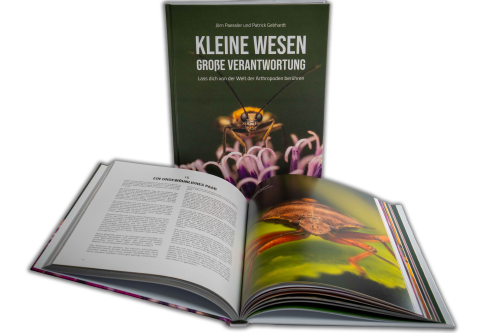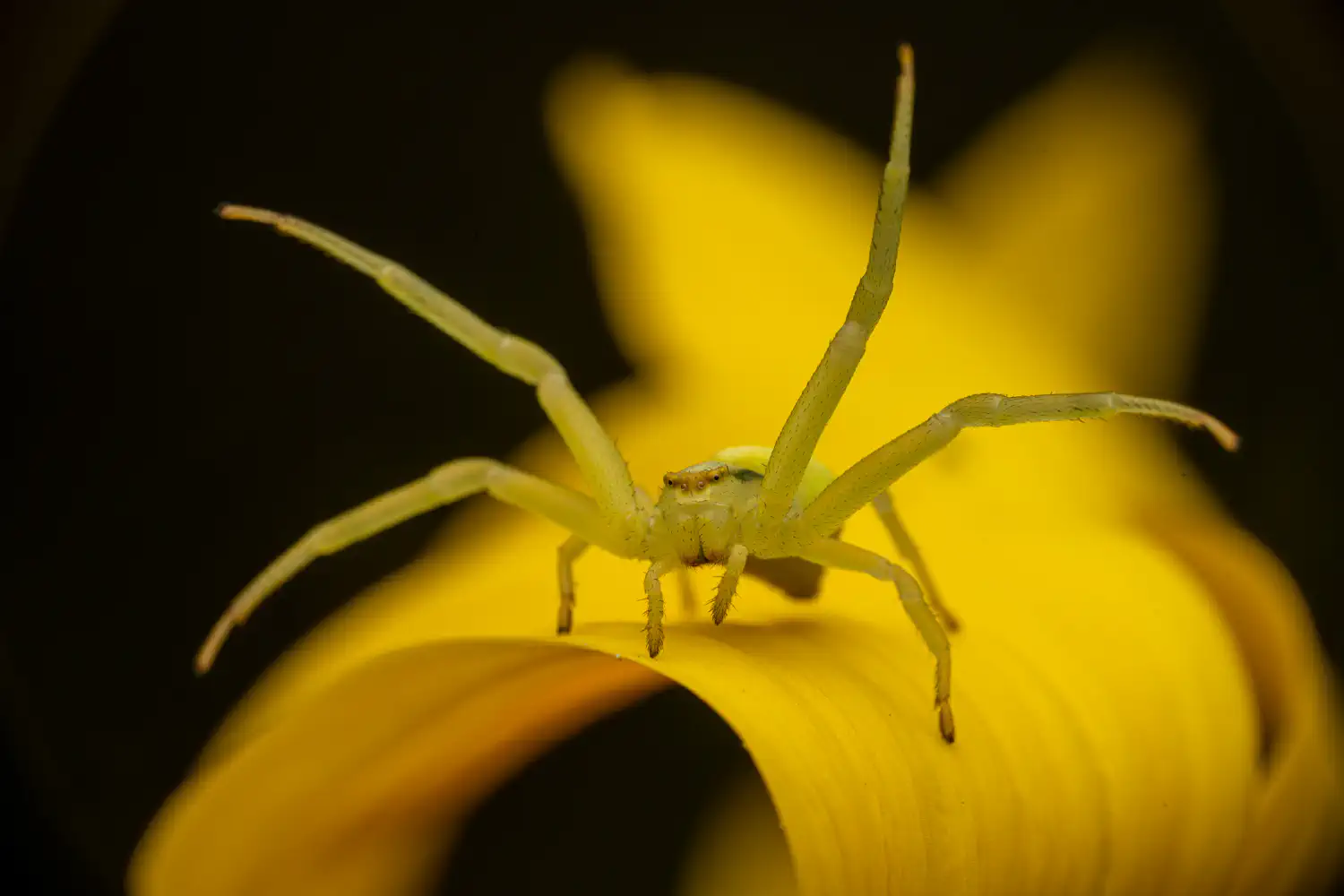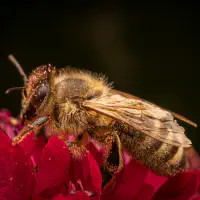Explained as easy as pie — Why small creatures have big differences
“Arthropods”… is a somewhat complicated name for the small flying and crawling animals we all know: They hide in bushes, trees, grass, and sometimes in our homes. They are usually shy, occasionally a bit cheeky, always unusual and each creature looks different. Why is that?
The word arthropod comes from the Greek ἄρθρον — meaning “joint” — and πούς — meaning “leg” — so “jointed leg”. Arthropods bear their name because they are characterized by their segmented limbs. In addition to this special body structure, the exoskeleton as a protective body shell is a feature that we only find in arthropods. In this way, evolution (more on this below) has ensured that small beings can develop and live safely.
We can also classify these animals into three main groups: Insects, crustaceans, and arachnids. Each of these groups has developed special looks to survive in different habitats. Arthropods have changed and adapted to their environment over millions of years, resulting in their impressive diversity.
Insects
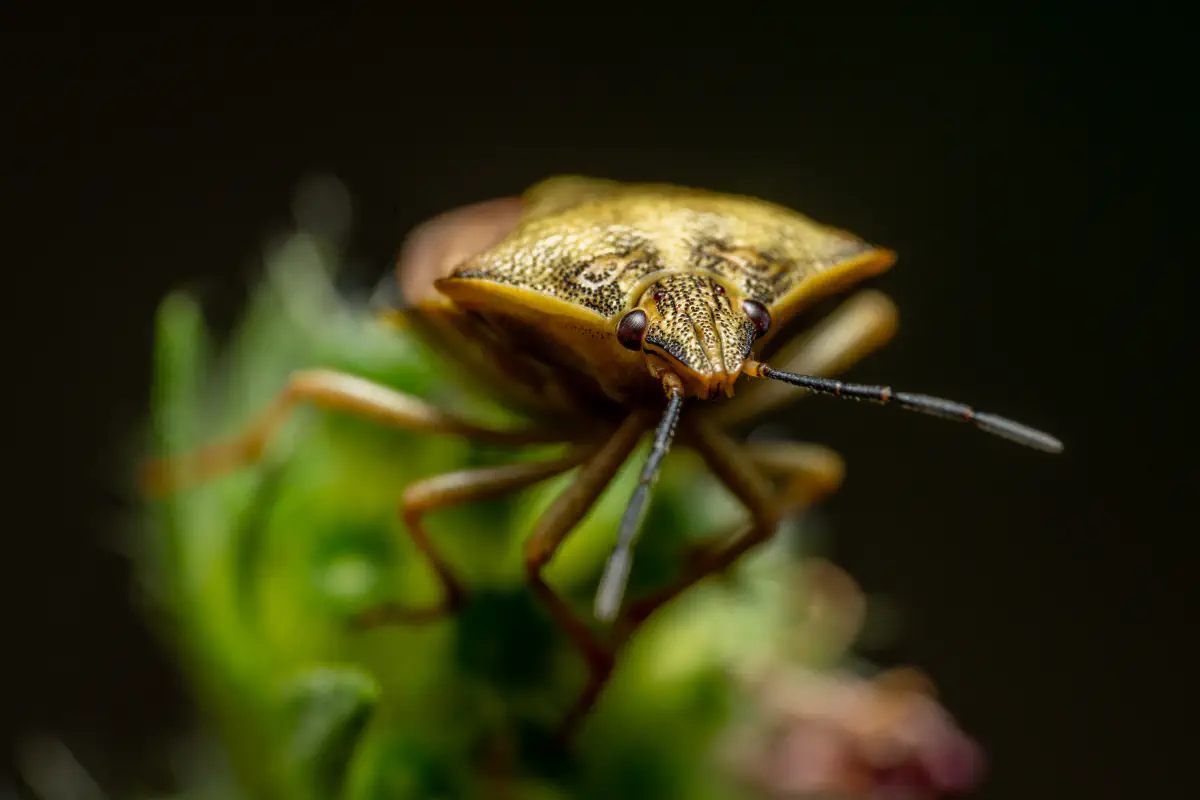
Insects are the largest group of arthropods. They live almost everywhere — in the air, in water, and on land. In Europe, the most well-known insects that everyone knows are the different species of butterflies, ants, and bees.
Butterflies often have colorful wings that protect them from predators. Their wing patterns help them to camouflage or scare off other animals. Ants live in large colonies and work together to gather food and build their nests. Bees are known for their important role in pollinating plants: without them, many of our favorite fruits and vegetables would not exist and we would have trouble harvesting enough food.
Insects have adapted to numerous habitats and tasks. For example, some insects, such as beetles, have evolved to survive difficult environments. Beetles have hard wing covers that protect their delicate wings. Bugs are also very resilient; the purple fruit bug is a fascinating example: this bug lays its eggs on the upper leaf surface of various plants. The small bugs that hatch from the eggs are called nymphs. They go through five nymphal stages, which are different growth phases in which they molt and grow larger before they become adults. Other insects, such as grasshoppers, have long legs that allow them to jump long distances and escape predators. You see — no two insects are identical, because each creature has to be able to do different things.
Crustaceans
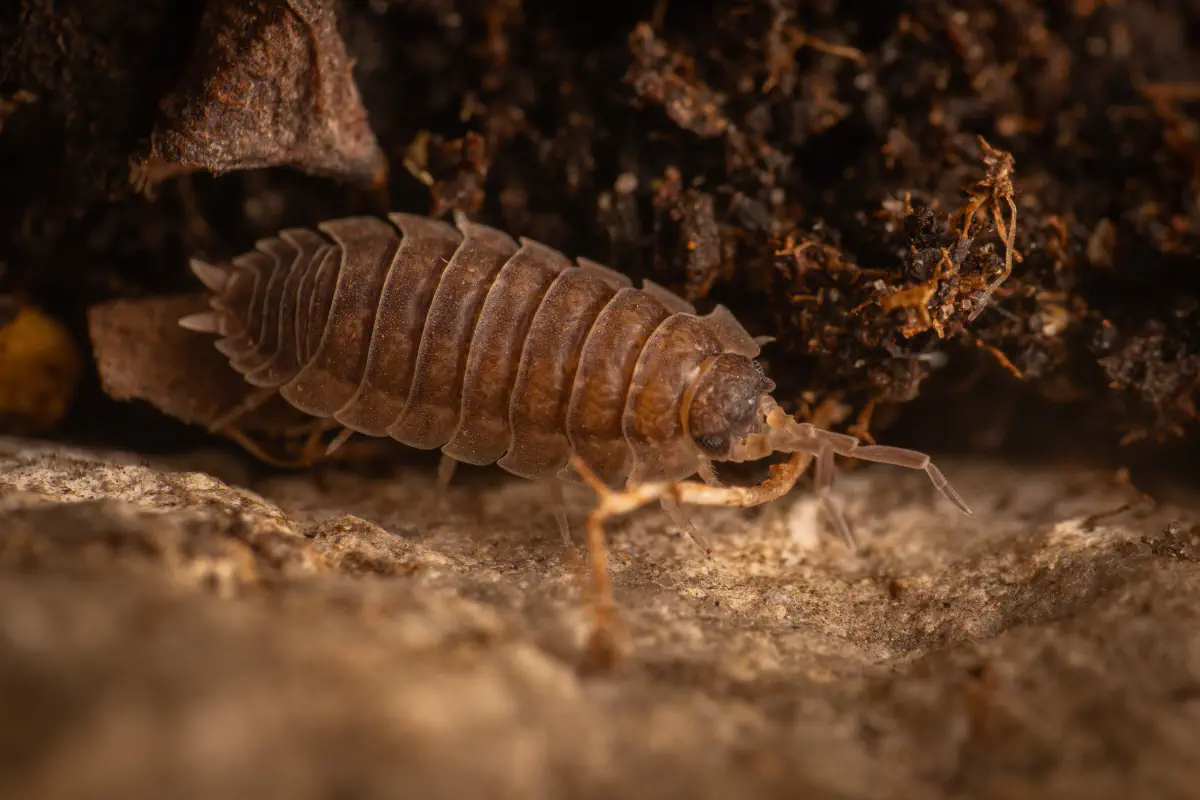
We know crustaceans mainly from the water, for example, crabs and lobsters. These have hard shells that protect them from predators. Some of these animals are even able to regrow their lost limbs, which helps them to survive in the harsh underwater world. What people sometimes forget, however, is that crustaceans also exist on land, and in a great variety.
The woodlouse is an example of this, and this “terrestrial isopod” often lives close to humans. It is usually dark grey, has a broad, oval body, and is very adaptable. Woodlice are frequently found in damp, dark areas such as cellars, gardens, and under stones. They play an important role in the decomposition of plant residues and thus contribute to soil fertility. These little helpers are real recycling experts in nature!
Arachnids
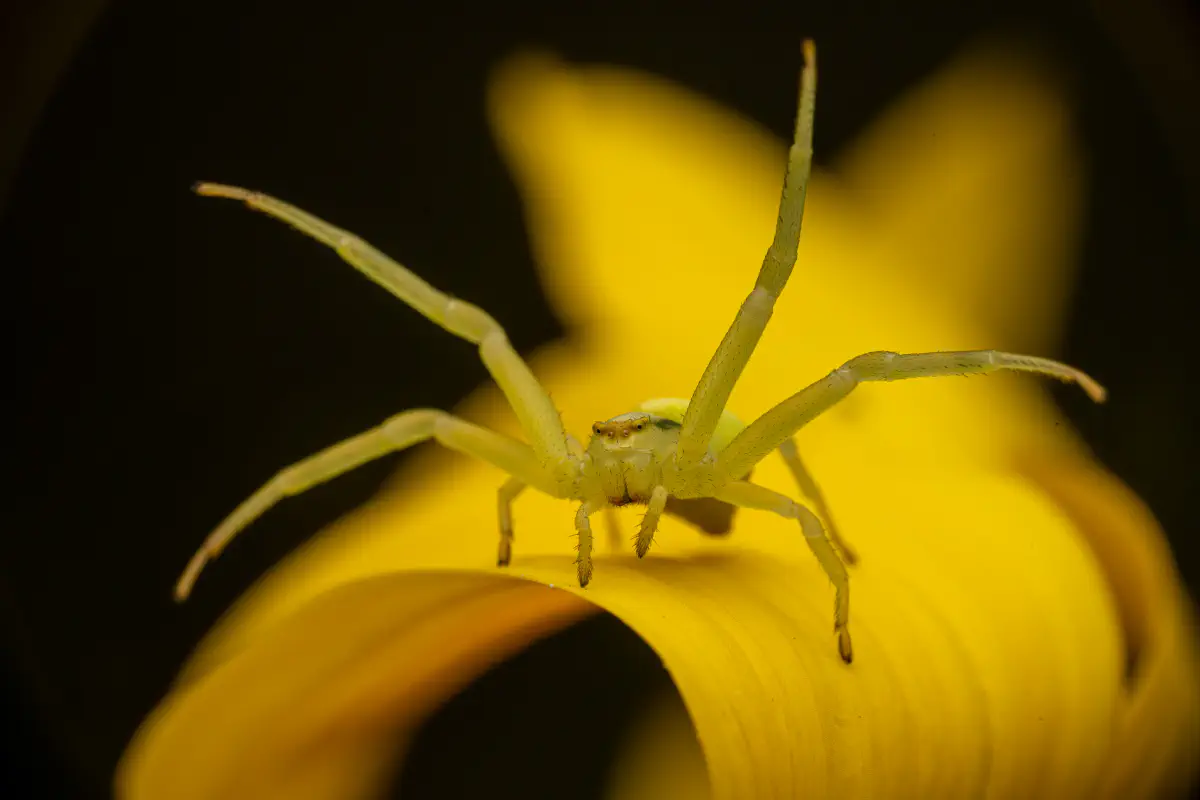
Many people are afraid of arachnids, which include not only spiders but also scorpions. Arachnids are important members of our ecosystem. These animals have adapted to different habitats, from deserts to tropical forests. Spiders are masters at building webs: Each species has its own technique for building a web. Some creatures plan large, round webs to catch flying insects, while others prefer to spin their webs in dark corners to hide and wait for prey.
Now comes an exciting strange word: “arachnophobia”. This is a strong fear of spiders. But don’t worry, just because you are sometimes frightened by the eight-legged creatures doesn’t mean you have arachnophobia. It’s normal to be a little skeptical of unfamiliar things. It often helps to take a closer look at these creatures. And it’s important to know: Fear of spiders is unfounded, especially in Europe. The little animals are mostly harmless and, above all, very useful because they catch many annoying insects.
The key to their diversity
As you have read above, there is one main reason why small creatures can evolve and live safely: The invisible wonders of evolution are behind the impressive diversity of arthropods. Evolution means that living things change over very long periods of time so that they fit better into their environment. The creatures that survive and reproduce are those that are best adapted to their environment and pass on their characteristics to their children. Of course, another reason for this diversity is that the little creatures live in different habitats — from the deepest oceans to the highest mountains.Logically, they have to possess different skills. Now you know why arthropods have developed unique characteristics and never cease to amaze us with their appearance.

Little beings in print
Order our calendars and books today!
Compiled with love. Printed sustainably. Experience our little beings even more vividly in print. All our publications are available for a small donation.
